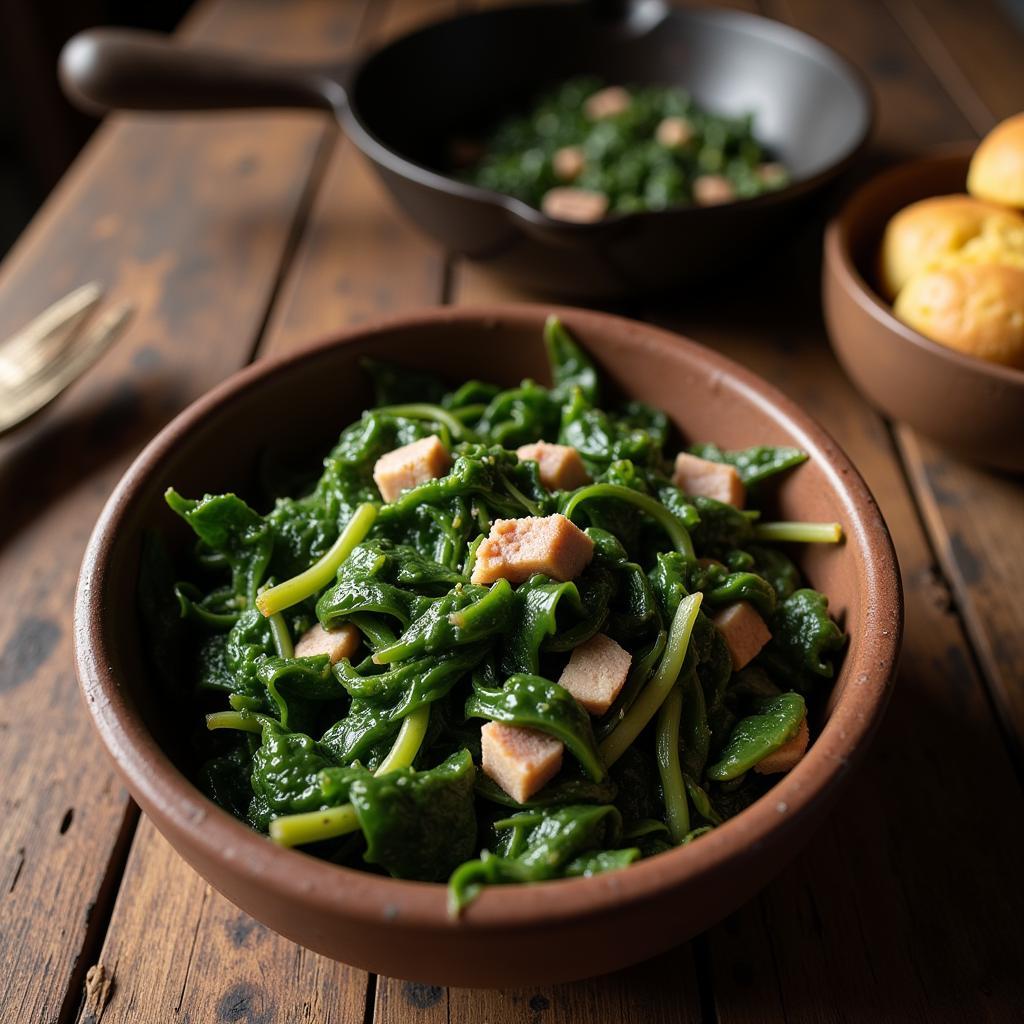Exploring African American Recipes of the 1800s
African American recipes from the 1800s offer a fascinating glimpse into the culinary heritage of a resilient and resourceful people. These dishes, shaped by history, necessity, and cultural influences, tell stories of adaptation, creativity, and survival during a challenging era. This article will delve into the rich history of African American cooking in the 19th century, exploring key ingredients, popular dishes, and the enduring legacy of this unique culinary tradition.
A Taste of History: Understanding 1800s African American Cuisine
The 19th century was a period of significant change and hardship for African Americans. Enslavement, followed by the Reconstruction era, deeply impacted their foodways. Limited resources and access to ingredients necessitated innovative approaches to cooking, resulting in dishes that were both flavorful and economical. African culinary traditions, blended with European and Native American influences, formed the basis of what we now recognize as African American cuisine. Oral traditions and family recipes, passed down through generations, preserved these culinary treasures. These African American Recipes 1800s represent more than just sustenance; they are a testament to the strength, ingenuity, and cultural preservation of a community.
Staple Ingredients and Common Techniques in African American Recipes 1800s
African American cooking in the 1800s relied heavily on readily available ingredients, often dictated by geography and circumstance. Corn, beans, rice, and sweet potatoes were staples, providing essential nutrients and forming the base of many dishes. Pork, particularly salted pork and hog jowls, was a common source of protein, often used for flavoring vegetables and grains. Greens, such as collard greens, mustard greens, and turnip greens, were also widely consumed, providing essential vitamins and minerals. Preservation techniques, like pickling, salting, and smoking, were crucial for extending the shelf life of food, especially during lean times. These practices also contributed distinct flavors to dishes that are still appreciated today.
 Salted Pork and Collard Greens in the 1800s
Salted Pork and Collard Greens in the 1800s
From Hoppin’ John to Hushpuppies: Exploring Popular Dishes
Many iconic African American dishes have their roots in the 1800s. Hoppin’ John, a flavorful combination of black-eyed peas and rice, was considered a symbol of good luck and prosperity. Hushpuppies, small, deep-fried cornmeal dumplings, were a common accompaniment to fried fish and other dishes. Chitterlings, though perhaps less common today, were also part of the 19th-century culinary landscape. These dishes, often prepared with simple ingredients, showcase the creativity and resourcefulness of African American cooks.
“Food wasn’t just about sustenance back then; it was about community and connection,” explains culinary historian Dr. Evelyn Jackson. “Sharing a meal was a way to celebrate, to mourn, and to strengthen bonds within the community.”
The Enduring Legacy of 1800s African American Cooking
The culinary traditions established in the 1800s continue to shape African American cuisine today. Many contemporary dishes are adaptations or reinterpretations of recipes passed down through generations. The emphasis on fresh, seasonal ingredients and the skillful use of spices and herbs remain hallmarks of this cuisine. Understanding the history of African American cooking provides a deeper appreciation for the cultural significance of these dishes.
“The resilience and creativity of African American cooks in the 1800s is truly remarkable,” adds Dr. Jackson. “Their culinary legacy is a testament to the power of food to connect us to our past and to nourish our future.”
Conclusion: A Culinary Journey Through Time
African American recipes from the 1800s offer a unique window into the past, revealing the ingenuity and resilience of a community. From simple ingredients and resourceful techniques to iconic dishes that are still enjoyed today, exploring this culinary heritage provides valuable insights into African American history and culture. These african american recipes 1800s are a testament to the enduring power of food to connect us to our roots.
FAQ
- What were some common ingredients used in African American cooking in the 1800s?
- What are some popular African American dishes from the 19th century?
- How did limited resources influence African American cooking during this period?
- What role did oral traditions play in preserving African American recipes?
- How has 1800s African American cooking influenced contemporary cuisine?
- Where can I find more information about African American culinary history?
- Are there any cookbooks that feature recipes from this era?
Other Related Articles You Might Enjoy:
- The Evolution of Soul Food
- African Influences on American Cuisine
- Preserving Culinary Traditions: Oral Histories and Family Recipes
Need assistance? Contact us 24/7 at +255768904061, email kaka.mag@gmail.com, or visit us in Mbarali DC Mawindi, Kangaga, Tanzania.

